Hi everyone. My name is Anju Kishi, and I was one of the VFX Artists on Bayonetta Origins: Cereza and the Lost Demon. My position was centered around creating the visual effects (or “VFX” for short) for the main character Cereza and I also supervised the overall VFX effort across the whole game. I would like to take this opportunity to talk to you about developing the visual effects found in Bayonetta Origins: Cereza and the Lost Demon!
Inside the Picture Book
The game’s Art Director, Tomoko Nishii, kept telling us to be sure not to let it look too computer-generated. (Read her entry here.) The reason for this is that we weren’t going for an effect that makes it seem the characters are jumping from the pages of a picture book. No, it needed to look as though the story were taking place inside the picture book itself. This meant that one of the biggest themes for the game was expressing this “Inside the Picture Book” via the visual effects.
Creating VFX Befitting the Art Direction
So in VFX terms, having it not look too computer-generated meant things like “no luminescence“, “no blur” and “no CG-like particle effects”. If you have even the slightest experience with VFX, you may know that it is actually very difficult to create effects with these restrictions at hand. That’s because VFX tends to make full use of all those things above to bring out impact and style of the work, so how on earth can we create effects without them?
As an example, let’s check out the “roar” effect for enemies and Cheshire.
By refraining from using luminescence, blur, and particle effects, and by generating multiple thinner lines, we were able to create a roar that is powerful but doesn’t seem too CG-like. Just like this roar, there are also many effects in this game that sublimated many of the elements considered standard in VFX. We reexamined these accordingly as we tried to bring the picture book direction to life.
As a small note here, the VFX in the final boss battle is actually much closer to the graphics you would see in the mainline Bayonetta games. We wanted to give the VFX a slight change here in order to express Cereza’s growth into Bayonetta and connect this to the existing Bayonetta universe. I hope you will keep this in the back of your mind as you play the game!
Picture Book vs. Comic Book Imagery
Let’s say a character gets angry in a comical way. You might want to place some sort of mark (“?” or “!”) to indicate this anger, right? That would be the usual way to express anger in a comic, for example. That said, a picture book and a comic are different entities. We kept that in mind as we completely avoided more generic expressions usually associated with comics. We discussed these at length with our Art Director and formulated safety guidelines lines. Let me show you one example.
There is a scene where an enemy boss, Amadán Dubh, gets angry. As we had already established our guidelines for not using any marks/symbols, we expressed Amadán Dubh’s anger with him huffing and puffing smoke and turning boiling-red.
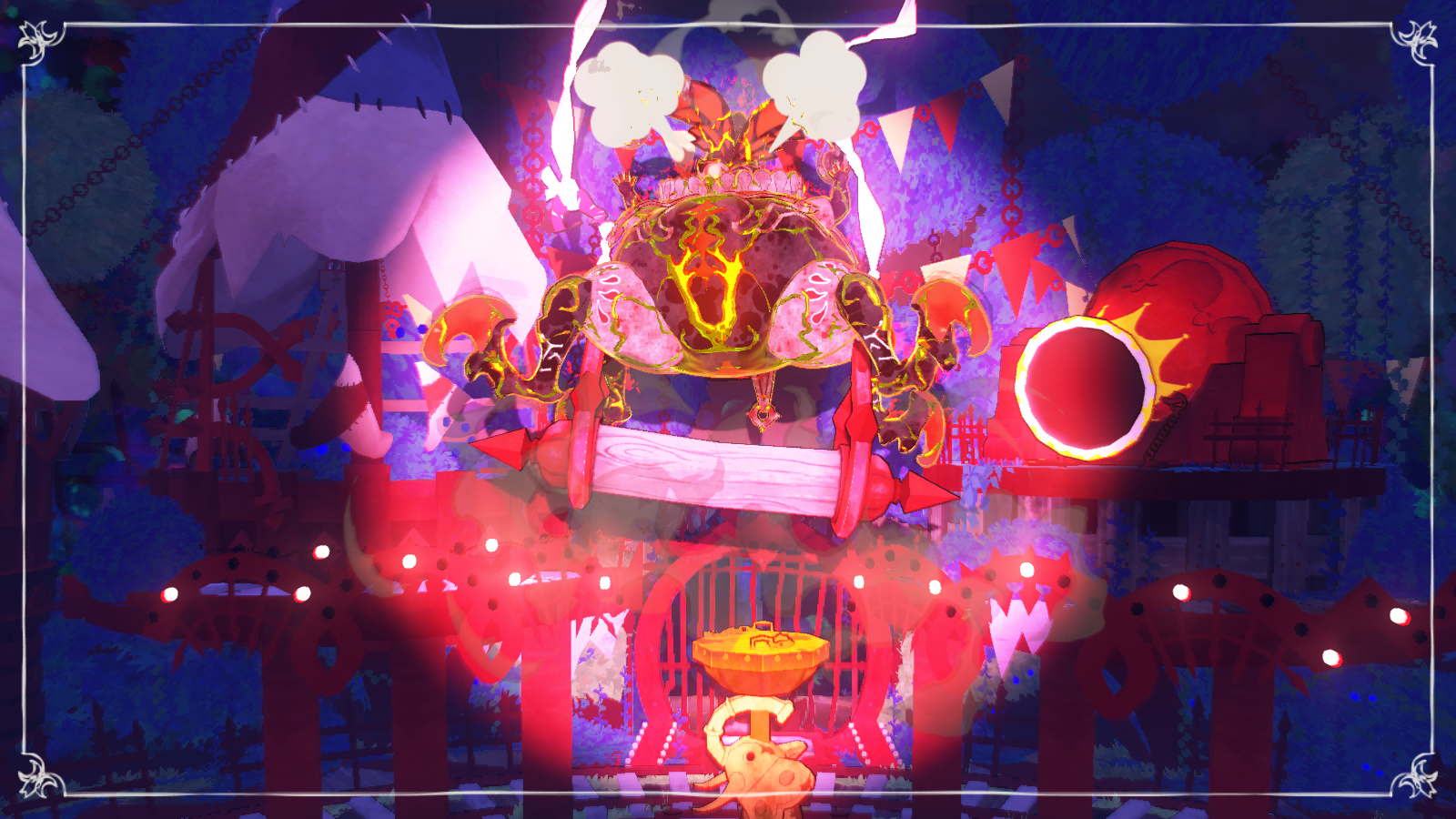 Expressing anger
Expressing anger
There is another scene where Amadán Dubh is caught by surprise. Again, we refrained from using the “!” mark, but instead we chose to express his surprise with hand-drawn jagged textures and lines.
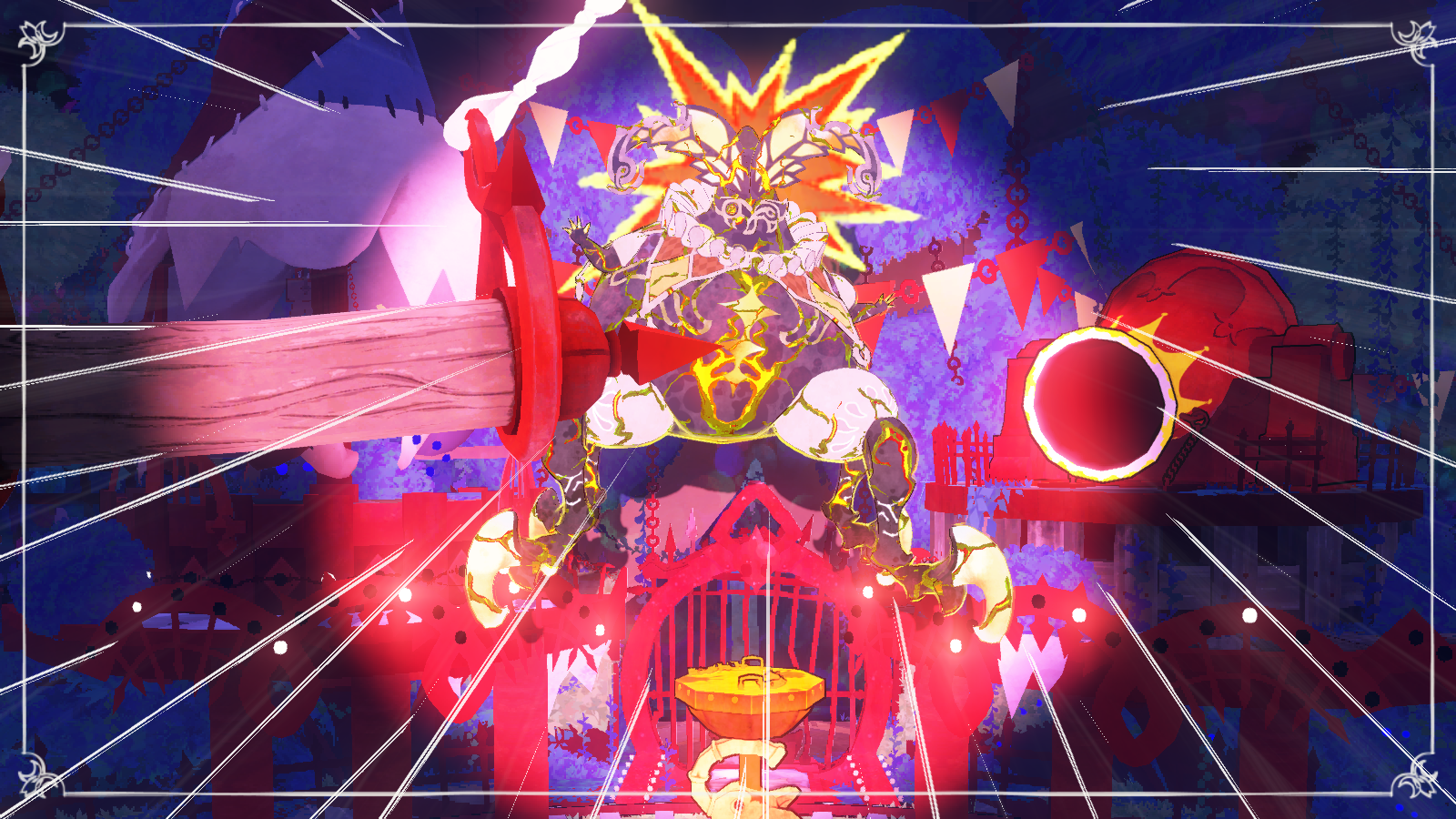 Expressing surprise
Expressing surprise
Of course, the emotional expression itself is made possible not only by the power of VFX, but also by the power of animation and sound effects. That said, VFX are also used in the same way to create expression befitting a picture book world.
Adding Picture Book Warmth With Hand-Drawn Textures
Usually, textures for VFX often include glows and gradients within the textures themselves, and these textures are often CG-composed. Using these kinds of textures would give the game a CG look and feel, even if only used for VFX purposes. As we wanted to avoid this, we pushed ourselves to create and use many hand-drawn textures directly drawn with a pen, for example.
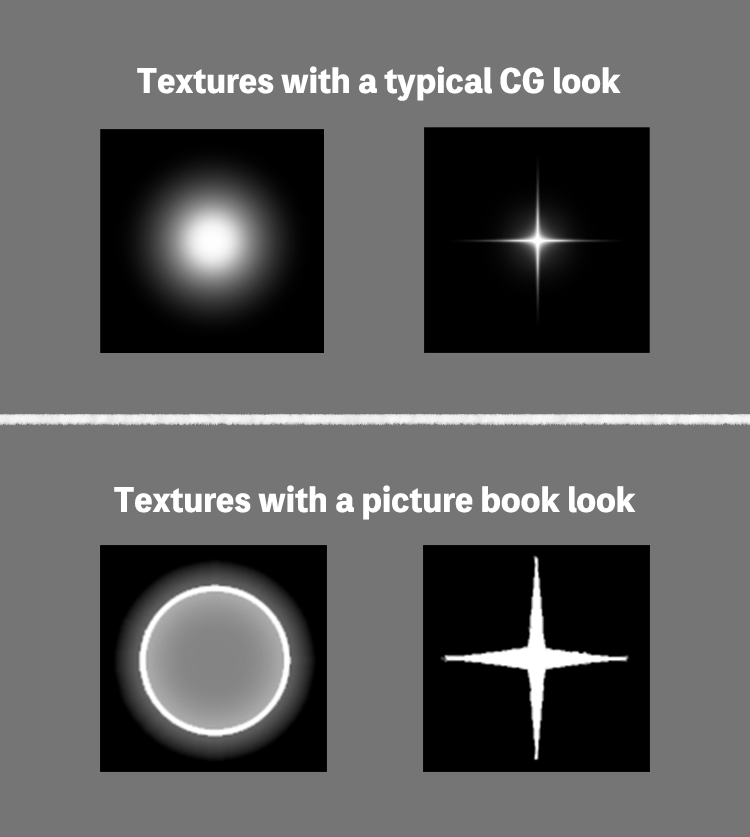 Despite being the same shape, by changing the touches ever so slightly, it looks more like something from a picture book!
Despite being the same shape, by changing the touches ever so slightly, it looks more like something from a picture book!
The key point of the hand-drawn textures in the game was the use of slightly rougher textures (ones that give the feel of paper) and not perfectly symmetrical lines. We treated the roughness that only hand-drawn textures can produce with the utmost care and tried to make textures feel asymmetrical on purpose. For example, for the candle effect we didn’t make a realistic candle flame, but instead created a hand-drawn candle flame texture. We then applied a round texture with a very low luminescent effect to the candle to make it seem warm.
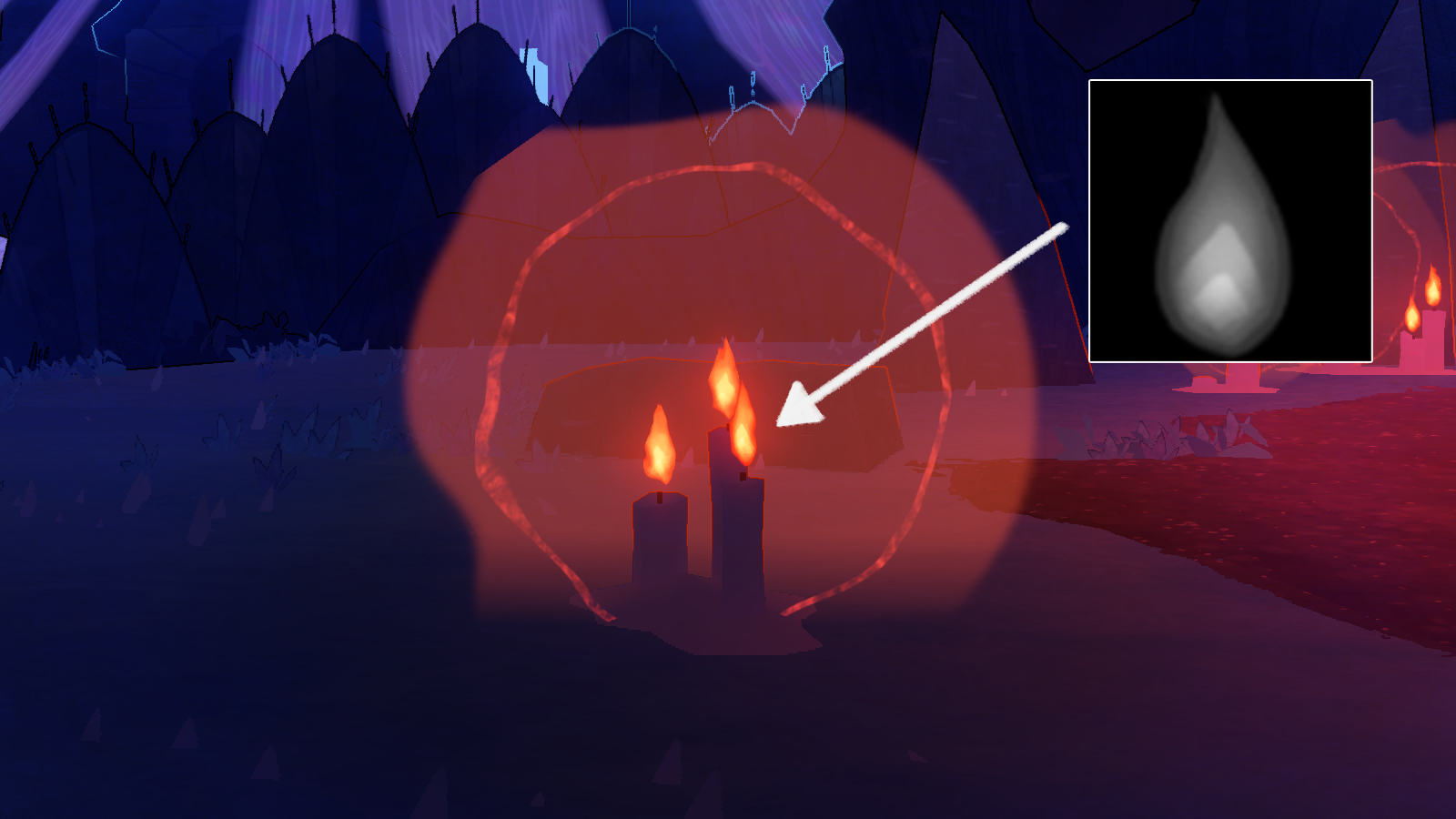 The candle flame is a hand-drawn texture.
The candle flame is a hand-drawn texture.
In addition, we also used hand-drawn animated textures for Cereza’s Witch Pulse magic. These textures were created by our art team. Preparing hand-drawn animated textures is costly and inefficient, but to create the picture book feeling we drew these textures one by one and used them for various other VFX.
Witch Pulse effect
The Beauty of Effects
Finally, I would like to introduce the true beauty of the VFX we used throughout the game. VFX can add various visual effects to the backgrounds as well as to the action, such as guiding the trajectory of the action itself. One other cool thing is that VFX can also level up the atmosphere of the environment or even change its whole appearance!
The soft atmosphere of the forest scenery is further amplified by the addition of VFX.
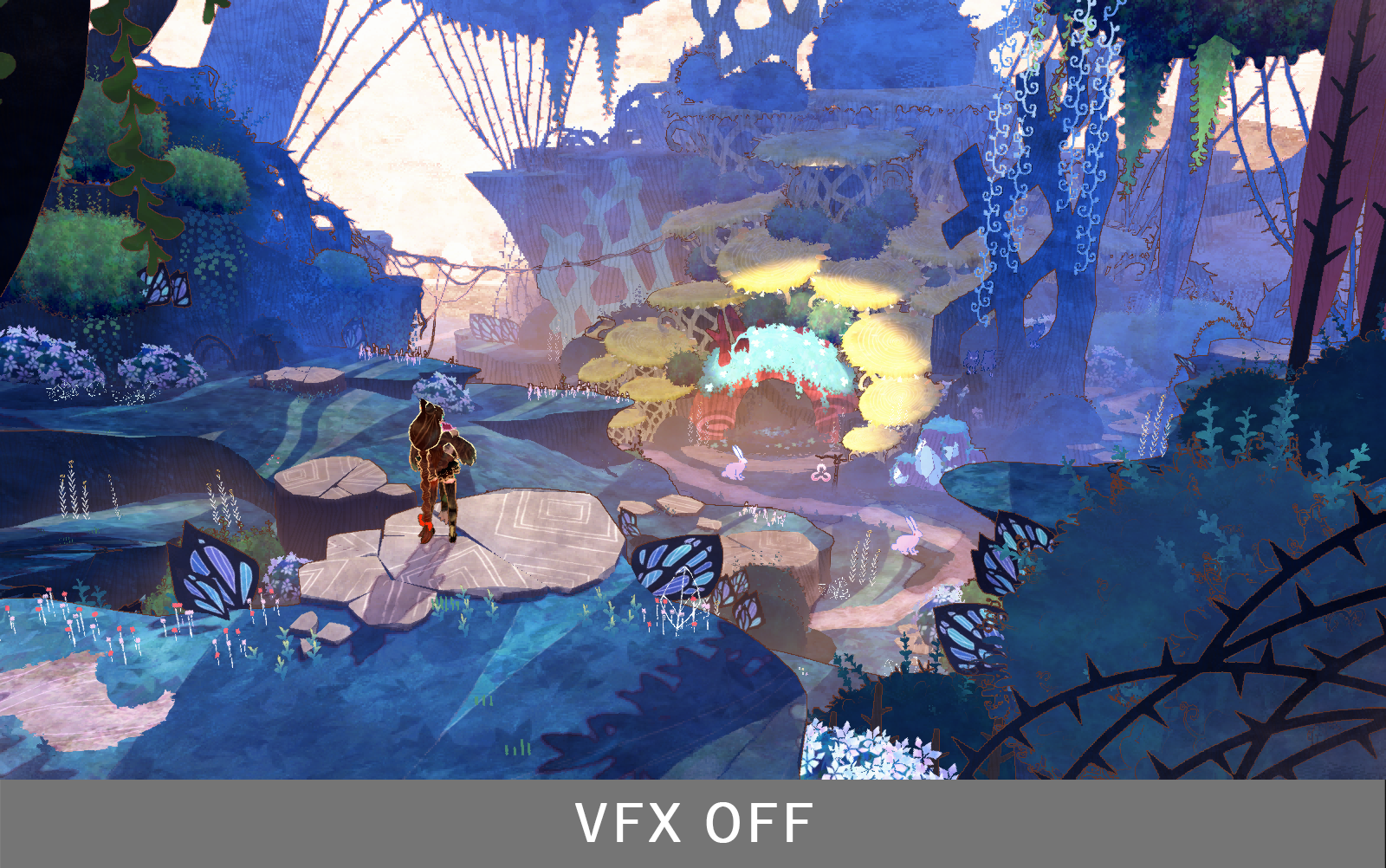
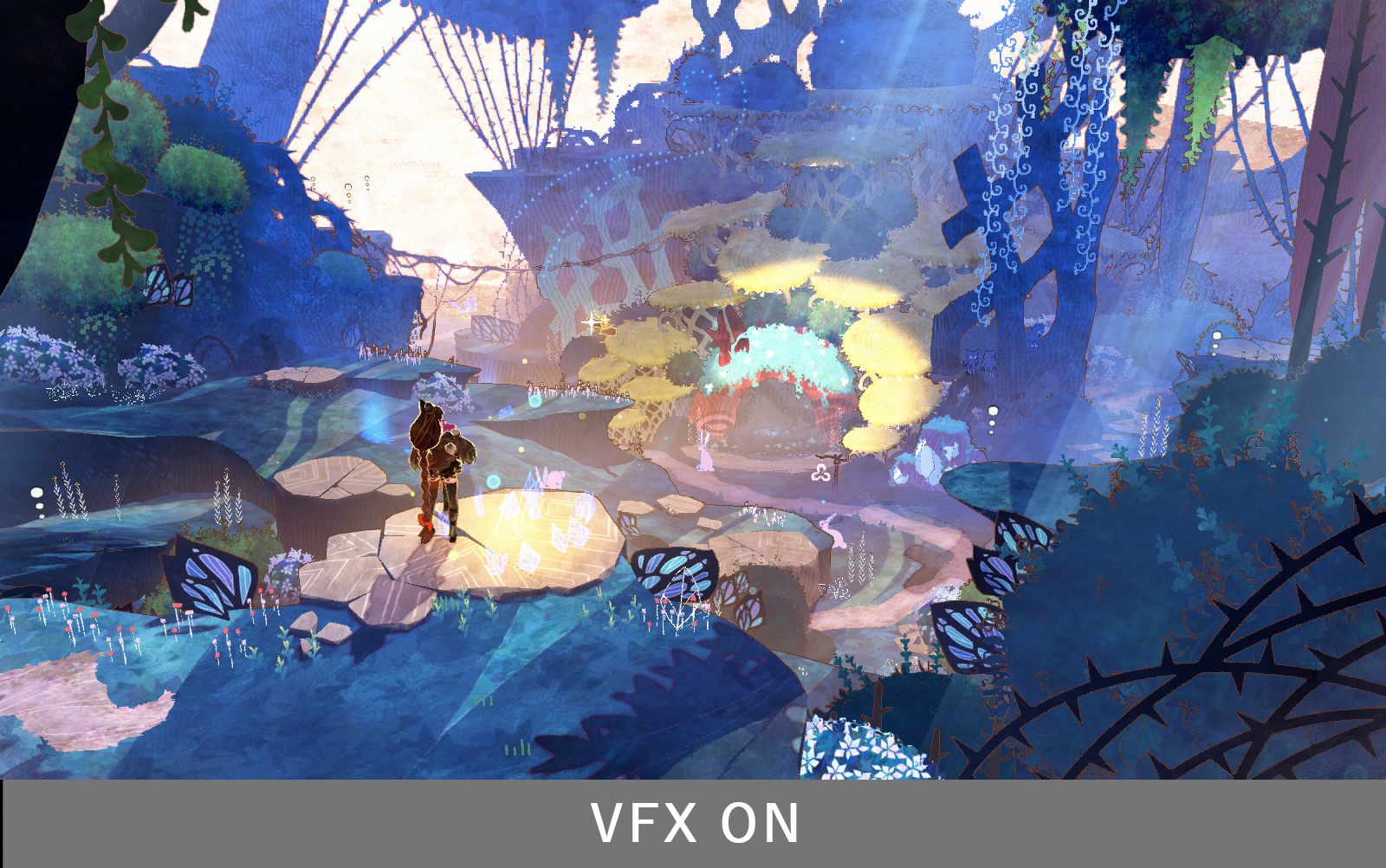
The surrounding environment in Tír na nÓg is covered with VFX, so if you hide the VFX, you can see that it is just a pitch-black space.
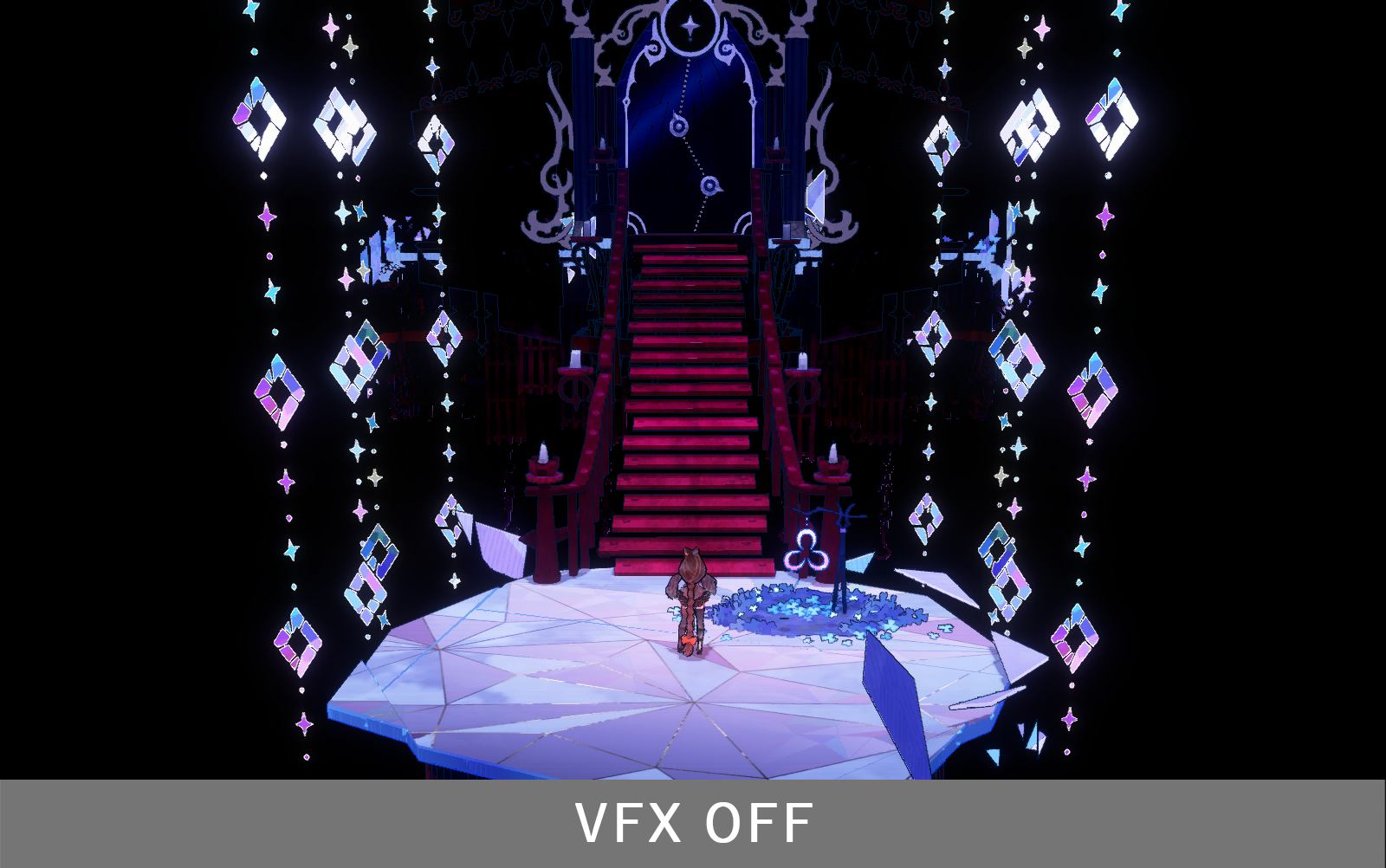
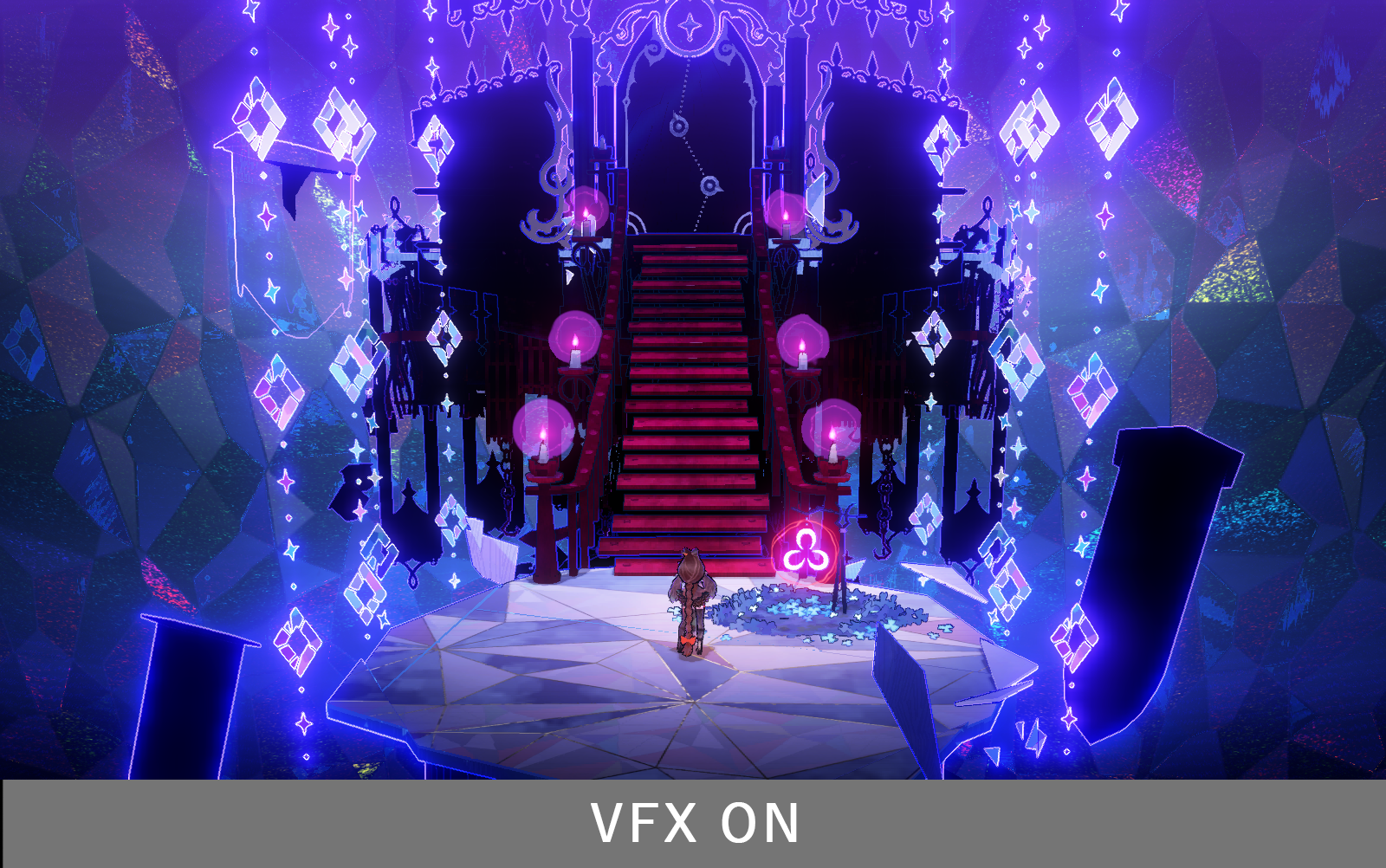
The VFX for Tír na nÓg ‘s surroundings actually consists of considerably few parts.
The impact of Cereza/Cheshire action feels very different with and without VFX!
In Closing…
The VFX talk has unfortunately come to an end. I hope that this entry managed to convey the beauty of the visual effects used in Bayonetta Origins: Cereza and the Lost Demon and give you a bit of a closer look at the sheer originality of the game itself.
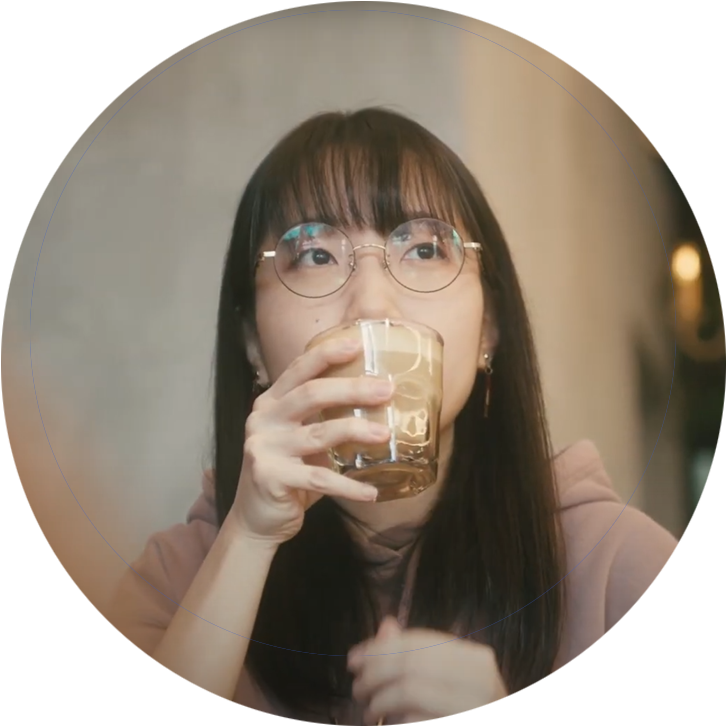 |
Anju Kishi Joined PlatinumGames in 2019 as a VFX Artist. After working on Bayonetta 3, she worked on the VFX across Bayonetta Origins: Cereza and the Lost Demon. She also created the VFX for the end credits in the game. |